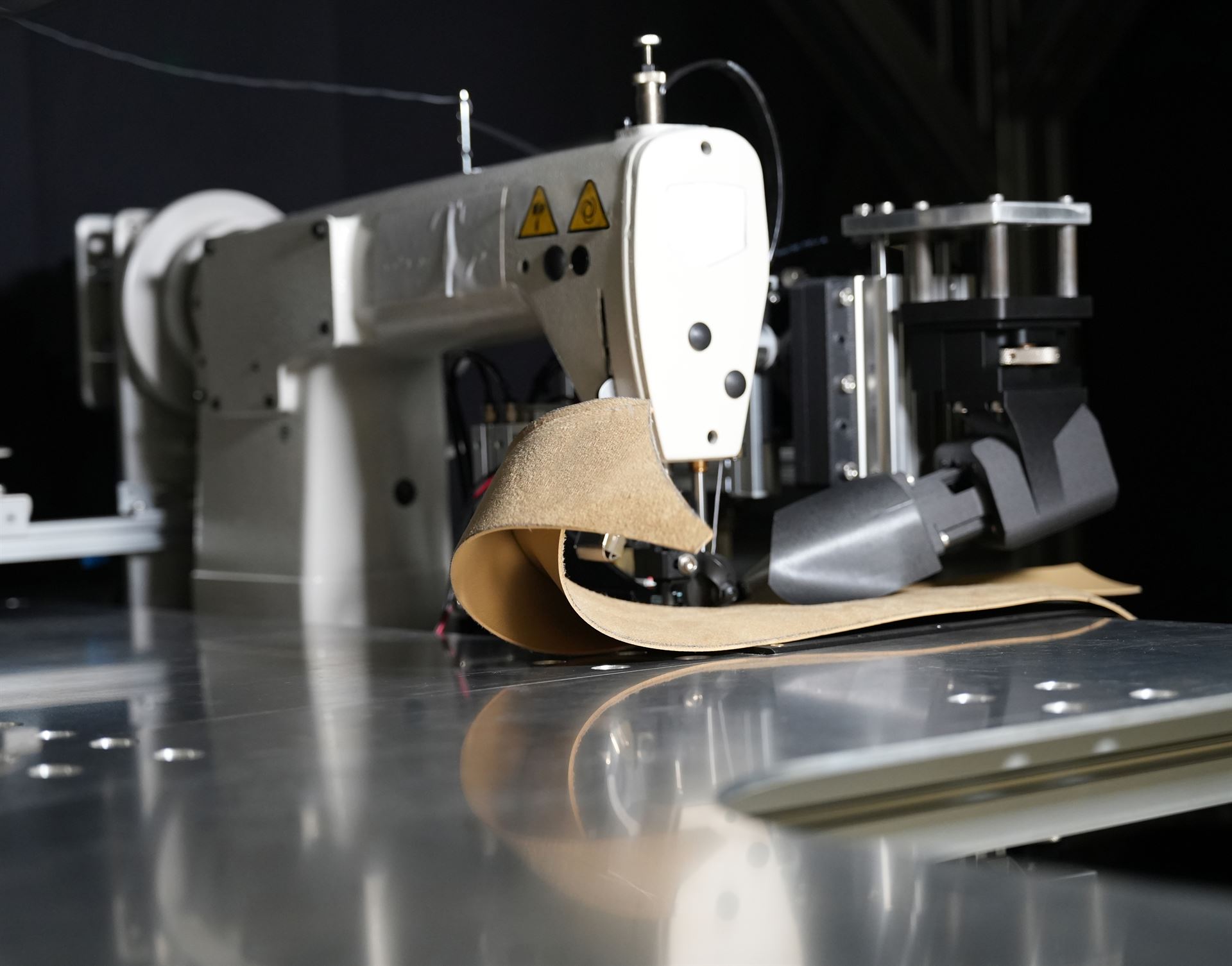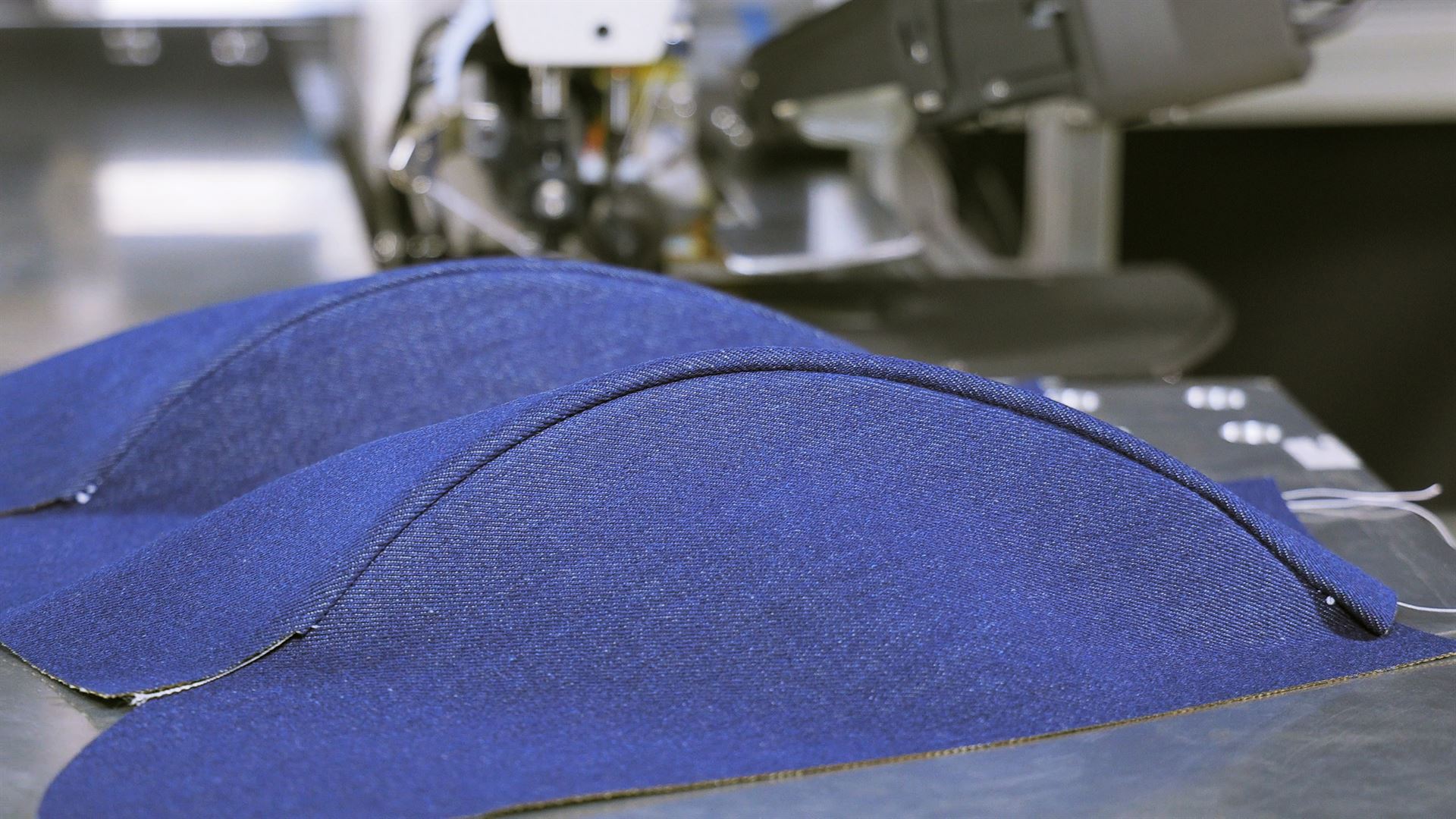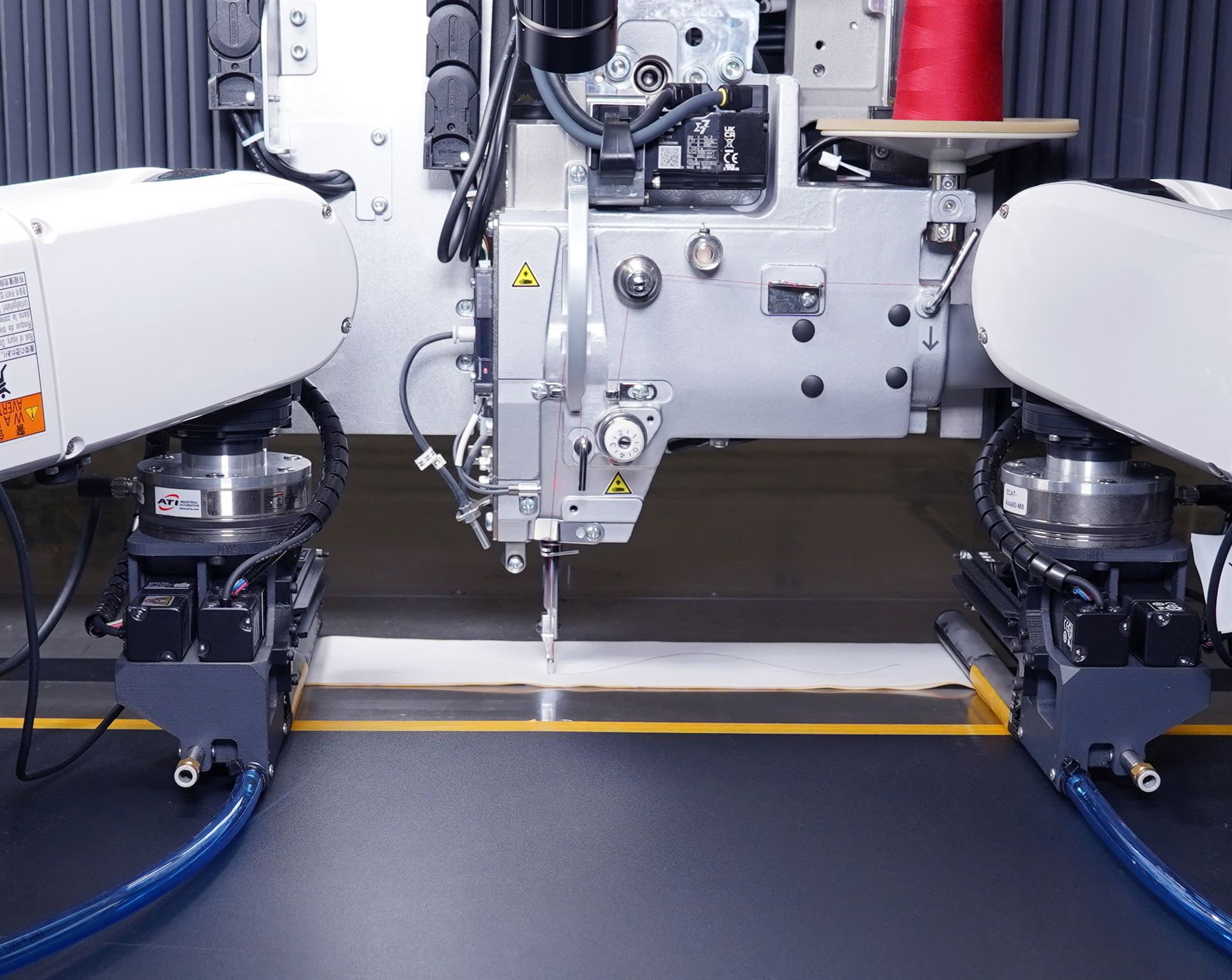
As the garment industry evolves, Centre for Transformative Garment Production, or TransGP, offers a glimpse into the future of efficient and high-quality garment manufacturing. By leveraging artificial intelligence-powered robotics, TransGP's advanced fixture-free two-dimensional and three-dimensional sewing systems automate complex tasks, enhance precision and facilitate garment customization.
Sewing serves as the cornerstone of garment manufacturing, where fabric pieces are skillfully crafted together to create wearable products. This process significantly influences the overall quality, fit and aesthetic appeal of the finished item.
Despite technological advancements, the industry continues to rely heavily on manual labor for garment production.
This reliance poses challenges as manufacturers strive to meet the growing demand for faster production, higher-quality garments and more personalized clothing, particularly amid an aging workforce and a shortage of skilled labor.
In response to these challenges and to maintain competitiveness, manufacturers have begun embracing AI and robotics to optimize production processes, improve efficiency and strike a balance between cost pressures and consumer expectations.
"We believe that robotic technology is the key technology at the core of this process. Although sewing machine manufacturers have achieved a variety of technological advancements, robotic technologies, however, require a different area of expertise," said Minoru Yamaguchi, a scientific advisory board member of TransGP and general manager of the industrial sewing machine development department at Brother Industries.
The automation of sewing, especially in the realm of 3D sewing, requires the integration of many technologies. These include robot control systems, grasping technology, haptic feedback (tactile technology), advanced vision systems, AI, compact actuators and communication technologies — all of which must be harmonized to operate at an affordable cost, Yamaguchi added.
Kazuhiro Kosuge, deputy managing director of TransGP, said: "This is where the fixture-free 2D and 3D sewing technologies come into play. With its R&D based in Hong Kong, TransGP leads the way in AI and robotic innovations, aiming to revolutionize traditional garment manufacturing processes through its cutting-edge automated sewing technologies."
Also, TransGP enables manufacturers to produce garments efficiently with greater precision and versatility by automating critical sewing processes, thereby improving the capacity for customization, ultimately moving toward mass customization, Kosuge said.
Pivotal technique
3D sewing stands as a pivotal technique in producing an array of clothing, from suits and jackets to dresses, underwear and sportswear, where achieving a close fit and unrestricted movement reign supreme.
For instance, 3D sewing along the contours of collars, sleeves and hems of a T-shirt ensures optimal comfort for the wearer. Similarly, the construction of many other fashion accessories, including handbags, footwear, leather goods and automotive upholstery, also leans heavily on the precision of 3D sewing techniques.
Thanks to the proprietary feeding and sensing units, TransGP's 3D sewing system can automate the sewing of two fabric panels with different curvatures into a desired shape with precise alignment, significantly reducing errors and defective parts that are otherwise prone to occur during manual sewing.


For traditional 2D sewing, the smart fixture-free 2D sewing system uses robotic arms and advanced machine vision to automate sewing without the need for mechanical fixtures or clamps, meaning a worker is not required to fix fabric parts to a fixture or jig before each sewing operation. The system includes a cutting-edge vision module to track seam lines and detect wrinkles, enabling precise tension control throughout the sewing process to eliminate seam puckering.

It has garnered recognition, including prestigious awards like the silver medal at the International Exhibition of Inventions Geneva 2024, as well as the gold medal, organizer's choice award and a special award at the ninth International Invention Innovation Competition in Canada.
"Robotic sewing can help the garment industry to leverage the enhanced education level of younger generations, so to avoid the impact from an aging labor market.
"It is also valuable in terms of quality stability since garment making is very dependent on individual skilled labor in the traditional model," said Luo Xiaolai, a scientific advisory board member of TransGP.
Driving force
TransGP was jointly established by the University of Hong Kong and Tohoku University in 2020 as part of the InnoHK initiative.
Norman Tien, managing director of TransGP, said: "We envision a future where AI and robotics revolutionize garment production. TransGP leverages its proprietary AI and robotics technologies to enhance throughput and quality, empower workers, elevate manufacturing agility and expand capabilities for smart garment production."
Supported by a team of interdisciplinary experts, the center established different spin-offs to address critical areas of garment production.
They include SewingDX, which focuses on 2D and 3D sewing technologies; PALGRIP, specializing in robotic pick-and-place and the positioning of fabric articles; and FlexAI, dedicated to AI-powered manufacturing solutions with machine vision-based motion analysis, object recognition and tracking.
The new era
AI-driven sewing systems revolutionize the manual fabric manipulation process by "learning" the most efficient fabric-handling techniques from humans. This ensures consistent stitch quality, leading to higher product yields and minimal waste generation.
"The production areas are concentrated in regions with low labor costs and the production is done far away from the consumption areas, which complicates the supply chain and leads to clothing waste and carbon dioxide emissions due to mismatches between supply and demand," Yamaguchi said.
Technology that advances automation, including robotics, can offer solutions to these challenges, he added. While the transformation won't happen overnight, TransGP is moving in the right direction to advance the industry and set a new standard for garment production; one that is built to meet the new challenges of the 21st century.



